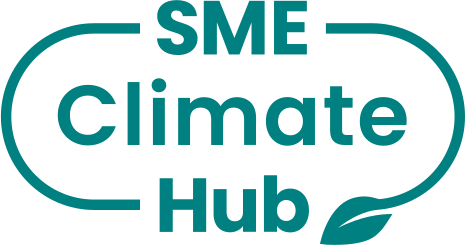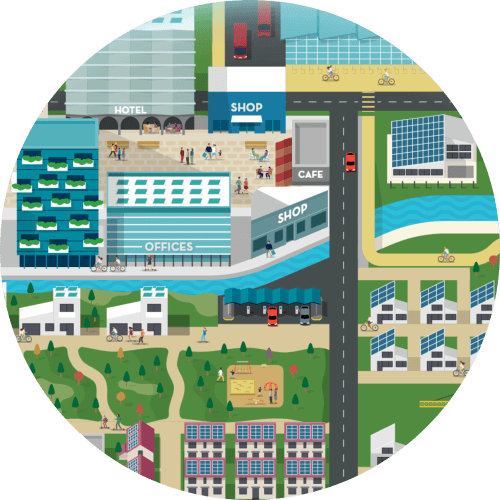اطلع على الخطوات التي يمكن لشركتك اتخاذها نحو مستقبل أكثر استدامة من خلال مواردنا المفتوحة.
Beverston Engineering Limited's Climate Report
Introduction *
Commitment And Targets *
Own emissions *
Value chain emissions *
(optional)Actions and plans to reduce emissions *
Climate Solutions *
(optional)Management and strategy *
(optional)Results, challenges and outlook *
Introduction *
reporting year
*2022
number of employees in the reporting year
*48
Commitment And Targets *
net zero target year
*2044
Base year
*2020
comment on your net zero targets
*Our emissions reduction targets are in line with Global GHG emission reductions Science Base Target (SBT) which is having peak emissions in 2020 every decade until 2050 to support global efforts to limit global warming to 1.5 deg Celsius maximum. Our target is to reduce GHG emissions by 50% by 2030 and achieve net zero emissions before 2050 in line with UK Government Target for Net Zero. To achieve this, we aspire to reduce our GHG emissions every year by 5-10%. Our progress towards reaching this target is good and we expect to meet the first 50% reduction target from our base year by 2025 and achieve net zero by 2044. Rod Wah, Managing Director and the Carbon footprint task force committee are responsible for the achievement. of the target.
near-term scope 1 target
*22.5
target year
*2025
near-term scope 2 target
*22.5
target year
*2025
Own emissions *
scope 1 emissions
scope 1 emissions (metric tons co2e)
*8.8
own facilities
*0.1
metric tons CO2eown vehicles
*8.6
metric tons CO2eown processes
*N/A
scope 2 emissions
scope 2 emissions (metric tons co2e)
*83.2
total energy consumption (kwh)
*430303
renewable energy
*-
purchased electricity
*83.2
metric tons CO2eRenewable electricity (%)
19
purchased steam
*N/A
Renewable electricity (%)
-
purchased heating
*N/A
Renewable electricity (%)
-
purchased cooling
*N/A
Renewable electricity (%)
-
Comment on your energy consumption
*We have invested heavily in digital manufacturing in the last two years which we believe have contributed to the drop in 2022. The condition monitoring system installed in the factory has allowed us to better manage the power usage in the factory especially the power usage of CNC machines which made us more energy efficient.
Value chain emissions (optional) *
scope 3 emissions
scope 3 emissions (metric tons co2e)
*47.7
supply chain related - upstream emissions
purchased goods and services
*Not measured
capital goods
*Not measured
fuel and energy related activities
*N/A
transportation and distribution (upstream)
*Not measured
waste in operations
*5.1
metric tons CO2ebusiness travel
*N/A
employee commuting
*42.6
metric tons CO2eleased assets (upstream)
*N/A
customer related - downstream emissions
transportation and distribution (downstream)
*Not measured
processing of sold products
*Not measured
use of sold products
*Not measured
end-of-life treatment of products
*Not measured
leased assets (downstream)
*N/A
franchises
*N/A
investments
*N/A
List any sources of emissions excluded:
*Purchased goods & services - Not quantified yet Capital Goods - Not quantified yet Fuel & energy activities not included in scope 1&2 - Not relevant as not used Upstream transportation & distribution - Not quantified yet Business Travel - Not relevant as little used Upstream leased assets - No leased assets Downstream transportation & distribution - Not quantified yet Processing of sold goods - Not quantified yet Use of sold goods - Not quantified yet End-of-life treatment of sold products - Not quantified yet Downstream leased assets - No leased assets Franchises (Fuel & electricity used in franchises) - No franchises Investments - No project investment
describe the calculation methodology and comment on accuracy:
*We have followed the Government's Guidance on how to measure and report Green House Gas (GHG) emissions. The reported emissions follows the UK Governments prescribed procedures, using DEFRAs 2013 'Environmental Reporting Guidelines'. Under these guidelines there is a requirement for UK listed companies to report on their contribution to carbon emissions output under Scope 1 (Direct emissions), Scope 2 (Energy Indirect) and significant Scope 3 (Other Indirect). We have used 2021 and 2022 UK Government 's Conversion Factors for Company Reporting (website: https://www.gov.uk/government/collections/government-conversion-factors-for-company-reporting). Beverston Engineering received an independent external assurance from the Low Carbon Eco-Innovatory (LCEI) ERDF funded project at Liverpool John Moores University. Through the LCEI project, we gained a bespoke tool developed to measure and asses the carbon footprint which we have used to measure Beverston Engineering from 2015 to 2022.
Actions and plans to reduce emissions *
Scope 1 Actions
own facilities
No
-
own vehicles
Yes
We plan to replace the diesel van used for own transport with a hybrid van.
own processes
N/A
-
scope 2 actions
purchased electricity
Yes
We plan to purchase green energy from a supplier where most comes from renewable energy sources. We also plan to generate our own energy through solar by installing solar panels on the roof. We also plan to use wind energy to generate power to run the compressors in the factory.
purchased steam
N/A
-
purchased heating
N/A
-
purchased cooling
N/A
-
scope 3 actions
supply chain related (upstream)
purchased good and services
*Yes
We plan to quantify it.
capital goods
*Yes
We plan to quantify it.
fuel and energy related activities
*N/A
-
transportation and distribution (upstream)
*Yes
We plan to quantify it.
waste in operation
*Yes
We plan to better manage our waste and further reduce emissions through digitisation and the use of digital applications and tools to better monitor and manage waste in operation.
business travel
*N/A
-
employee commuting
*Yes
We plan to install electric car charging facilities on site to encourage employees to use electric vehicles. We also plan to introduce a cycle to work scheme for employees and have already invested in a bike shed on site.
upstream leased assets
*N/A
-
customer related (downstream)
transportation and distribution (downstream)
*Yes
We plan to quantify it.
processing of sold products
*Yes
We plan to quantify it.
use of sold products
*Yes
We plan to quantify it.
end-of-life treatment of products
*Yes
We plan to quantify it.
leased assets (downstream)
*N/A
-
franchises
*N/A
-
investments
*N/A
-
i have asked my suppliers to halve emissions before 2030 and join the un-backed race to zero campaign
*No
i have communicated my commitment and actions to my business customers and asked them to join the un race to zero
*No
Climate Solutions (optional) *
are you investing in climate and/or nature outside your value chain?
*No
Management and strategy (optional) *
Results, challenges and outlook *

Beverston Engineering Limited's Climate Report
Beverston Engineering Limited's Climate Report - 2022
Introduction *
reporting year
*2022
number of employees in the reporting year
*48
Commitment And Targets *
net zero target year
*2044
Base year
*2020
comment on your net zero targets
*Our emissions reduction targets are in line with Global GHG emission reductions Science Base Target (SBT) which is having peak emissions in 2020 every decade until 2050 to support global efforts to limit global warming to 1.5 deg Celsius maximum. Our target is to reduce GHG emissions by 50% by 2030 and achieve net zero emissions before 2050 in line with UK Government Target for Net Zero. To achieve this, we aspire to reduce our GHG emissions every year by 5-10%. Our progress towards reaching this target is good and we expect to meet the first 50% reduction target from our base year by 2025 and achieve net zero by 2044. Rod Wah, Managing Director and the Carbon footprint task force committee are responsible for the achievement. of the target.
near-term scope 1 target
*22.5
target year
*2025
near-term scope 2 target
*22.5
target year
*2025
Own emissions *
scope 1 emissions
scope 1 emissions (metric tons co2e)
*8.8
own facilities
*0.1
metric tons CO2eown vehicles
*8.6
metric tons CO2eown processes
*N/A
scope 2 emissions
scope 2 emissions (metric tons co2e)
*83.2
total energy consumption (kwh)
*430303
renewable energy
*-
purchased electricity
*83.2
metric tons CO2eRenewable electricity (%)
19
purchased steam
*N/A
Renewable electricity (%)
-
purchased heating
*N/A
Renewable electricity (%)
-
purchased cooling
*N/A
Renewable electricity (%)
-
Comment on your energy consumption
*We have invested heavily in digital manufacturing in the last two years which we believe have contributed to the drop in 2022. The condition monitoring system installed in the factory has allowed us to better manage the power usage in the factory especially the power usage of CNC machines which made us more energy efficient.
Value chain emissions (optional) *
scope 3 emissions
scope 3 emissions (metric tons co2e)
*47.7
supply chain related - upstream emissions
purchased goods and services
*Not measured
capital goods
*Not measured
fuel and energy related activities
*N/A
transportation and distribution (upstream)
*Not measured
waste in operations
*5.1
metric tons CO2ebusiness travel
*N/A
employee commuting
*42.6
metric tons CO2eleased assets (upstream)
*N/A
customer related - downstream emissions
transportation and distribution (downstream)
*Not measured
processing of sold products
*Not measured
use of sold products
*Not measured
end-of-life treatment of products
*Not measured
leased assets (downstream)
*N/A
franchises
*N/A
investments
*N/A
List any sources of emissions excluded:
*Purchased goods & services - Not quantified yet Capital Goods - Not quantified yet Fuel & energy activities not included in scope 1&2 - Not relevant as not used Upstream transportation & distribution - Not quantified yet Business Travel - Not relevant as little used Upstream leased assets - No leased assets Downstream transportation & distribution - Not quantified yet Processing of sold goods - Not quantified yet Use of sold goods - Not quantified yet End-of-life treatment of sold products - Not quantified yet Downstream leased assets - No leased assets Franchises (Fuel & electricity used in franchises) - No franchises Investments - No project investment
describe the calculation methodology and comment on accuracy:
*We have followed the Government's Guidance on how to measure and report Green House Gas (GHG) emissions. The reported emissions follows the UK Governments prescribed procedures, using DEFRAs 2013 'Environmental Reporting Guidelines'. Under these guidelines there is a requirement for UK listed companies to report on their contribution to carbon emissions output under Scope 1 (Direct emissions), Scope 2 (Energy Indirect) and significant Scope 3 (Other Indirect). We have used 2021 and 2022 UK Government 's Conversion Factors for Company Reporting (website: https://www.gov.uk/government/collections/government-conversion-factors-for-company-reporting). Beverston Engineering received an independent external assurance from the Low Carbon Eco-Innovatory (LCEI) ERDF funded project at Liverpool John Moores University. Through the LCEI project, we gained a bespoke tool developed to measure and asses the carbon footprint which we have used to measure Beverston Engineering from 2015 to 2022.
Actions and plans to reduce emissions *
Scope 1 Actions
own facilities
No
-
own vehicles
Yes
We plan to replace the diesel van used for own transport with a hybrid van.
own processes
N/A
-
scope 2 actions
purchased electricity
Yes
We plan to purchase green energy from a supplier where most comes from renewable energy sources. We also plan to generate our own energy through solar by installing solar panels on the roof. We also plan to use wind energy to generate power to run the compressors in the factory.
purchased steam
N/A
-
purchased heating
N/A
-
purchased cooling
N/A
-
scope 3 actions
supply chain related (upstream)
purchased good and services
*Yes
We plan to quantify it.
capital goods
*Yes
We plan to quantify it.
fuel and energy related activities
*N/A
-
transportation and distribution (upstream)
*Yes
We plan to quantify it.
waste in operation
*Yes
We plan to better manage our waste and further reduce emissions through digitisation and the use of digital applications and tools to better monitor and manage waste in operation.
business travel
*N/A
-
employee commuting
*Yes
We plan to install electric car charging facilities on site to encourage employees to use electric vehicles. We also plan to introduce a cycle to work scheme for employees and have already invested in a bike shed on site.
upstream leased assets
*N/A
-
customer related (downstream)
transportation and distribution (downstream)
*Yes
We plan to quantify it.
processing of sold products
*Yes
We plan to quantify it.
use of sold products
*Yes
We plan to quantify it.
end-of-life treatment of products
*Yes
We plan to quantify it.
leased assets (downstream)
*N/A
-
franchises
*N/A
-
investments
*N/A
-
i have asked my suppliers to halve emissions before 2030 and join the un-backed race to zero campaign
*No
i have communicated my commitment and actions to my business customers and asked them to join the un race to zero
*No
Climate Solutions (optional) *
are you investing in climate and/or nature outside your value chain?
*No
Management and strategy (optional) *
Results, challenges and outlook *
Not sure how to start?
See the steps you can take and get help building a plan to cut your business emissions today.
¿No estás seguro de por dónde empezar?
Revisa los pasos que puedes dar y obtén ayuda para elaborar un plan para reducir las emisiones de tu empresa hoy mismo.
لست متأكداً كيف تبدأ؟
اطلع على الخطوات التي يمكنك اتخاذها واحصل على المساعدة في وضع خطة لخفض انبعاثات شركتك اليوم.
Vous ne savez pas par où commencer ?
Découvrez les mesures que vous pouvez prendre et obtenez de l’aide pour élaborer un plan pour réduire les émissions de votre entreprise dès aujourd’hui.
Ready to commit to lower emissions?
It’s easy to make the commitment. Just complete a form sharing your intent to reduce your emissions.
You’ll earn public recognition for taking the first step.
¿Listo para comprometerte a reducir tus emisiones?
Es fácil comprometerse. Solo tienes que completar un formulario compartiendo tu intención de reducir tus emisiones.
Ganarás reconocimiento público por tomar este primer paso.
هل أنت مستعد للالتزام بتقليل الانبعاثات؟
الالتزام سهل. ما عليك سوى تعبئة نموذج لمشاركة عزمك على تقليل انبعاثاتك.
سوف تحظى باعتراف عام باتخاذك الخطوة الأولى.
Prêt à vous engager pour réduire les émissions ?
S’engager est simple. Il suffit de remplir un formulaire indiquant votre intention de réduire vos émissions.
Vous gagnerez une reconnaissance publique pour avoir fait le premier pas.
Register now to use our tools
Register now to use our tools

ابقَ على اطلاع!
اشترك في نشرتنا الإخبارية للبقاء على اطلاع بأحدث التطورات المناخية.
تسجيل الدخول
Don't have an account? Create account to access our tools or make the SME Climate Commitment
تسجيل الدخول
Don't have an account? Create account to access our tools or make the SME Climate Commitment
تسجيل الدخول
Don't have an account? Create account to access our tools or make the SME Climate Commitment
هل نسيت كلمة المرور؟
Please enter your email address. You will receive a link to create a new password via email.

 Go back
Go back

